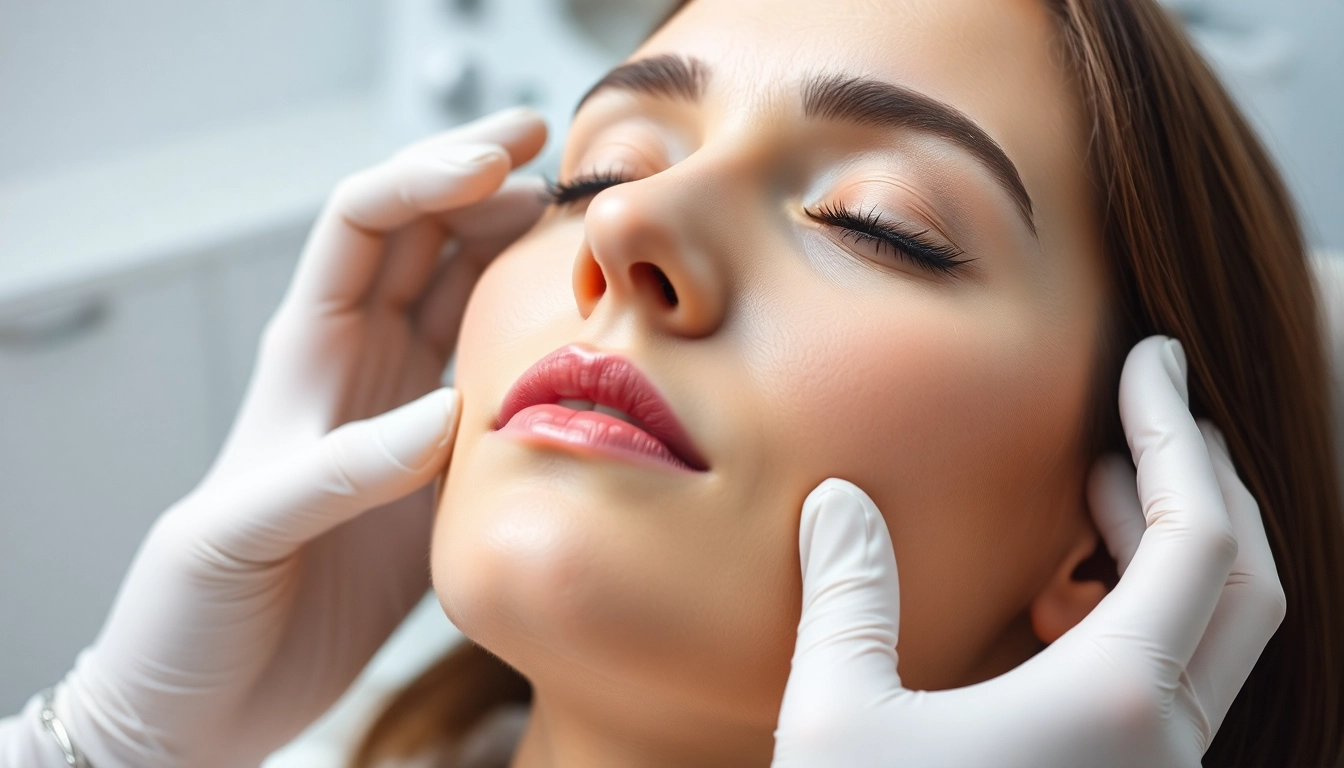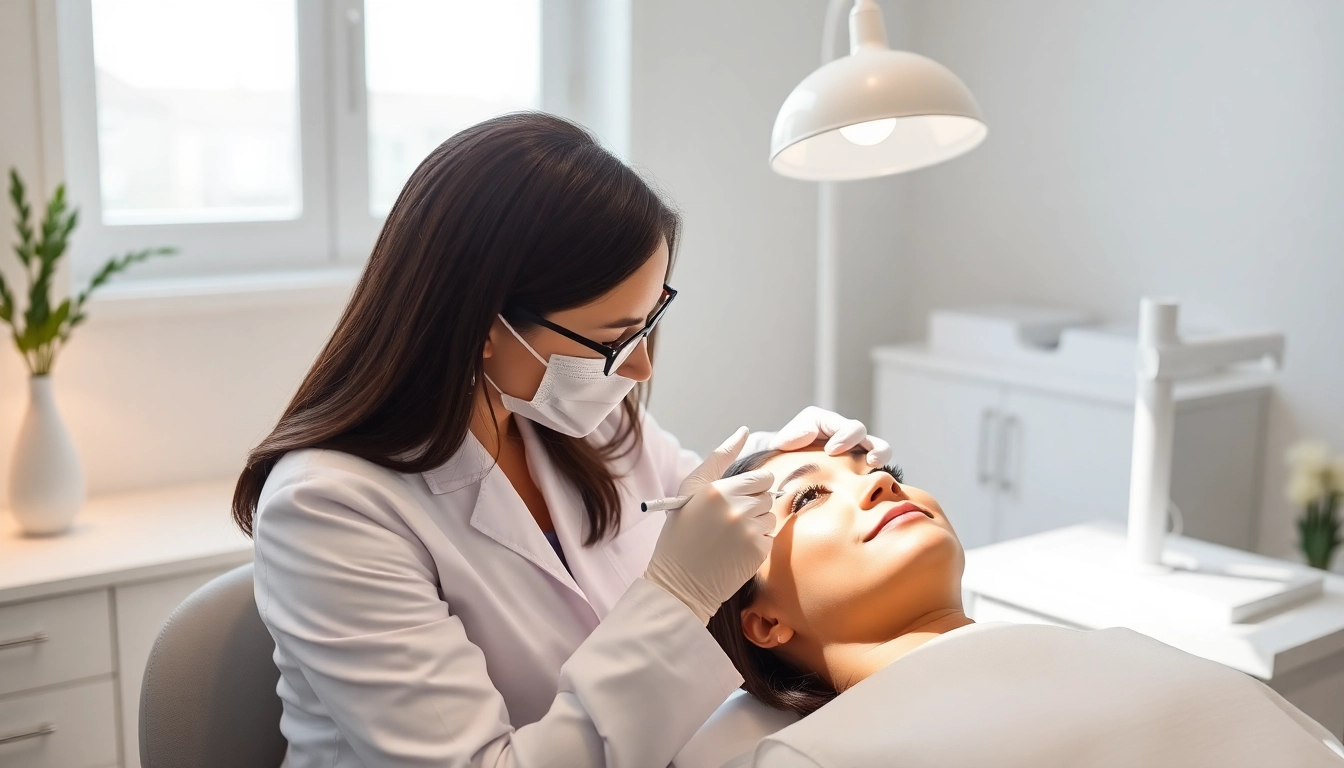Understanding Botox Behandlung
What is Botox and How Does It Work?
Botox, short for Botulinum toxin type A, is a neurotoxic protein derived from the bacterium Clostridium botulinum. This potent substance has gained immense popularity in aesthetic medicine for its ability to temporarily paralyze muscles, leading to a reduction in the appearance of wrinkles and fine lines. The injections work by blocking the nerve signals to the muscles, preventing them from contracting. As a result, these targeted muscles soften, allowing the skin above to remain smooth and unwrinkled.
Initially developed for medical applications, such as treating blepharospasm (eyelid spasms) and chronic migraines, Botox has reshaped its image into a cornerstone of cosmetic enhancements. Its effectiveness, coupled with a relatively quick procedure time and minimal recovery needs, makes Botox a go-to option for individuals looking to revitalize their appearance.
The Science Behind Botox Behandlung
The science of how Botox functions revolves around neuromuscular junctions in the body. When injected into specific muscles, Botox interferes with the release of acetylcholine, a neurotransmitter crucial for muscle contraction. This biochemical reaction leads to a state of temporary muscle paralysis, which diminishes the muscle’s ability to contract, effectively softening the wrinkles that form from repetitive facial movements.
Research supports the safety and efficacy of Botox, with studies indicating its positive effect on various types of wrinkles, including dynamic wrinkles that occur with movement (like frown lines) and even some statically present lines. This multifunctionality underlines why many people consider Botox Behandlung an appealing solution for aesthetic concerns.
Common Uses of Botox Injections
Botox is not only limited to wrinkle reduction. Its uses extend across a diverse range of medical and cosmetic applications. Here are some of the most common:
- Facial Wrinkles: Botox is primarily known for alleviating forehead lines, crow’s feet, and frown lines.
- Excessive Sweating: Known medically as hyperhidrosis, Botox injections can temporarily block the nerves responsible for sweating, providing relief for individuals dealing with excessive perspiration.
- Migraines: For patients suffering from chronic migraines, Botox can serve as a preventive measure, substantially decreasing the frequency and severity of headaches.
- Muscle Spasms: Botox is effective in treating various muscle disorders, including cervical dystonia and blepharospasm.
- Jaw Slimming and Teeth Grinding: Botox can be employed to relax the muscles responsible for grinding teeth, allowing for a more comfortable jaw position and aesthetic enhancement.
Preparing for Your Botox Behandlung
Consultation: What to Expect
Prior to undergoing a Botox treatment, a comprehensive consultation with a qualified healthcare provider is essential. During this appointment, patients should expect a thorough discussion about their goals, medical history, and any underlying health conditions that could influence the treatment’s safety and effectiveness.
The provider will assess the areas of concern, helping patients visualize potential outcomes. Moreover, it’s a prime opportunity for patients to ask questions, ensuring they are fully informed about the procedure, including risks and expected results.
Pre-Treatment Guidelines
To ensure the best possible outcome, patients should follow some pre-treatment guidelines:
- Avoid blood-thinning medications: Nonsteroidal anti-inflammatory drugs (NSAIDs), such as ibuprofen or aspirin, should be avoided for at least 24 hours prior to treatment to minimize the risk of bruising.
- No alcohol intake: Steering clear of alcohol 24 hours before the procedure can also help reduce complications and bruising.
- Maintain a clear complexion: It’s advisable to arrive for the appointment with clean skin free from makeup or lotions, ensuring that the injection site is clear for treatment.
Choosing a Qualified Provider for Your Botox Behandlung
With the increasing popularity of Botox, the number of practitioners offering the treatment has surged. It’s crucial to choose a qualified and experienced provider. Look for the following qualifications:
- Board Certification: Ensure the provider is certified in a relevant field, such as dermatology or plastic surgery.
- Experience: Ask about their experience with Botox procedures specifically. A practitioner experienced in facial anatomy understands the best techniques to achieve desired results.
- Reputation: Seek out reviews or testimonials from previous patients. Group recommendations can also be telling.
The Botox Behandlung Process
Step-by-Step Overview of the Treatment
The Botox treatment process is relatively straightforward and quick. Here’s what patients can typically expect during the procedure:
- Preparation: The provider will mark the injection sites and clean the skin with an antiseptic solution.
- Injection: Using a fine needle, the practitioner will inject small amounts of Botox into specific muscles.
- Post-Injection Care: After the injections, patients are often advised to remain upright and avoid strenuous activity for a few hours.
Duration and Types of Injections
Most Botox treatments are completed within 10 to 30 minutes, depending on the extent of the treatment area. Patients often appreciate the quick turnaround, allowing them to fit the procedure into their busy schedules effectively.
Botox can be administered in various ways—manually, or via devices that ensure precise placement of the injections with reduced discomfort. The choice of technique may depend on the area treated and the practitioner’s expertise.
Pain Management During Botox Behandlung
Though Botox injections are generally well-tolerated, patients may experience mild discomfort. To minimize pain, providers may use ice packs or topical anesthetics prior to the injections. Some practitioners utilize ultra-fine needles to further reduce discomfort during treatment.
Post-Treatment Care and Recovery
Immediate Aftercare Tips
After the procedure, proper aftercare is vital for achieving optimal results and minimizing side effects. Here are essential tips to follow:
- Avoid touching or massaging the injected areas for at least 24 hours to prevent spreading the toxin to unintended muscles.
- Remain upright for a few hours following treatment to help the injections distribute effectively.
- Avoid strenuous activities and excessive heat (like saunas or intense workouts) for at least 24 hours post-treatment.
Managing Side Effects of Botox Behandlung
While the majority of patients experience few side effects, some may encounter temporary issues such as bruising, swelling, or asymmetrical results. If side effects manifest, they typically resolve within a few days. Applying ice packs to the affected areas can provide comfort and reduce swelling.
If patients experience severe reactions or prolonged discomfort, contacting the provider for guidance is crucial. They can offer solutions or reassurance based on their expertise.
When to Follow Up with Your Provider
Scheduling a follow-up appointment is important for assessing results and planning future treatments. Typically, patients should return approximately two weeks post-injection for a check-in. During this appointment, the results of the Botox treatment can be evaluated, and adjustments (if needed) can be made to optimize outcomes.
Long-term Effects and Considerations
Results: What to Expect Over Time
Results from Botox treatments often become evident within a few days, with full effects visible by two weeks. The improvement in the appearance of wrinkles can last for 3 to 6 months, depending on individual factors such as the treated area, the product used, and the patient’s unique metabolism.
Upon each subsequent treatment, patients typically find that the duration of the effects may extend. This phenomenon has been attributed to the gradual weakening of the facial muscles over time, which results in a longer-lasting effect with continued Botox use.
Frequency of Treatments and Maintenance
To maintain the desired results, patients generally require follow-up treatments every 3 to 6 months. Some individuals may find they need treatments less frequently over time as their facial muscles become accustomed to the effects of Botox.
Discussing a suitable treatment schedule with a qualified provider can help tailor a plan that meets individual aesthetic goals and ensures natural-looking results.
Addressing Myths and Concerns About Botox Behandlung
Navigating the world of cosmetic procedures can be daunting, and misinformation about Botox persists. Here are some common myths debunked:
- Myth: Botox is toxic and unsafe. While it’s true that Botox is a potent toxin, when administered by an experienced professional, it is safe and effective for aesthetic and medical treatments.
- Myth: Botox will freeze your face. When administered correctly, results should appear natural, with facial expressions preserved. Overuse or improper techniques may lead to undesirable results.
- Myth: Botox is only for older adults. Many younger individuals opt for Botox as a preventative measure against aging, addressing early signs of wrinkles.
Conclusion
Botox Behandlung has established itself as a transformative tool in both aesthetic and medical spheres. Recognized for its effectiveness and versatility, it offers individuals a non-surgical option for maintaining a youthful appearance and alleviating various conditions. Through careful preparation, understanding of the procedure, and effective post-treatment care, individuals can achieve satisfactory results while minimizing risks. As with any cosmetic procedure, thorough research and consultation with a qualified provider are crucial for ensuring both safety and satisfaction.



